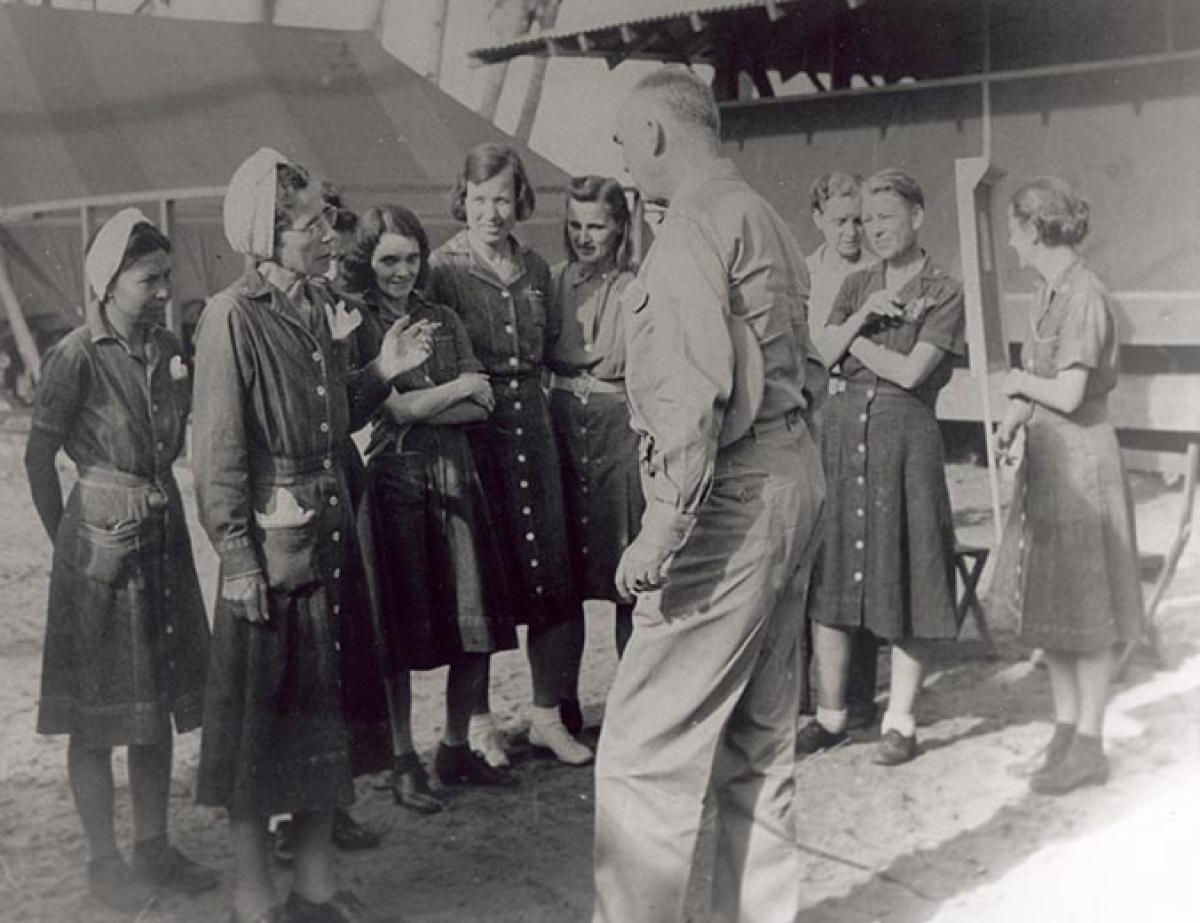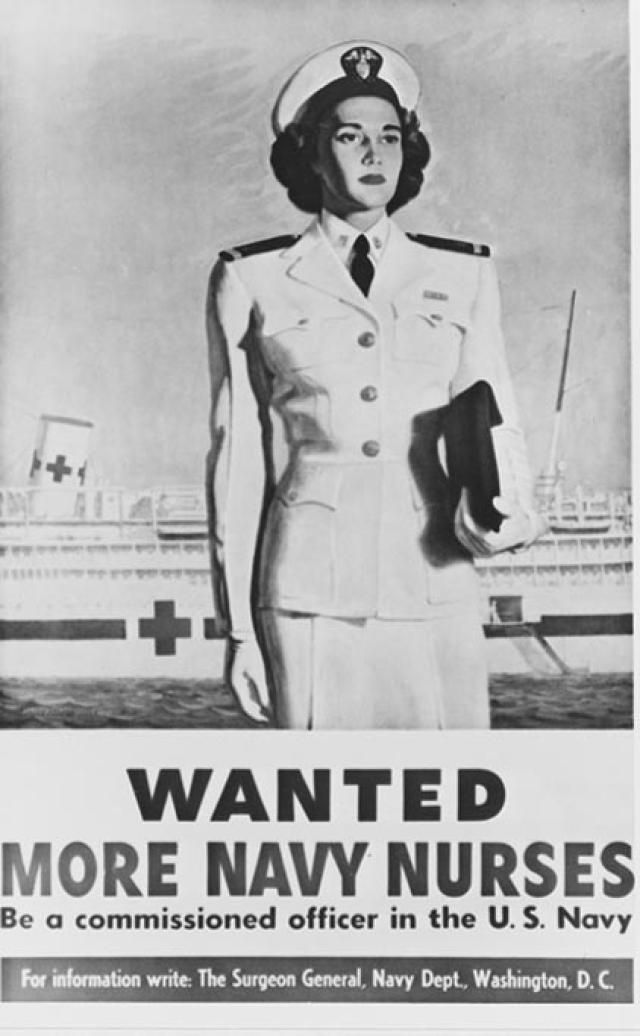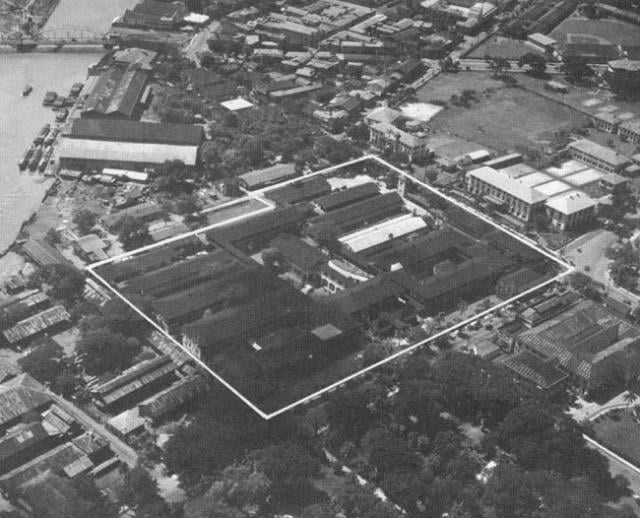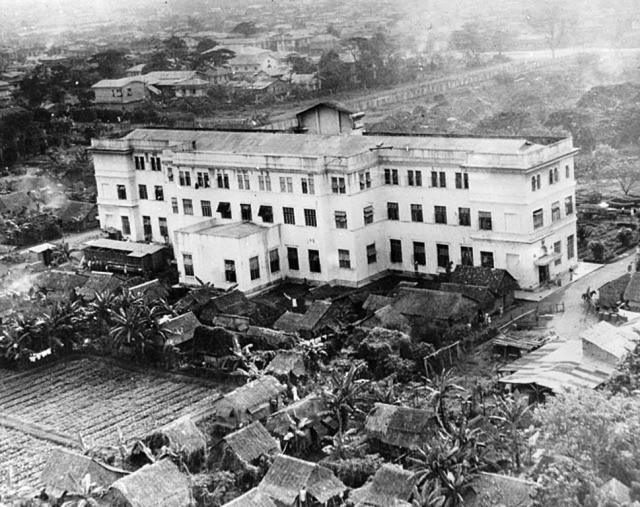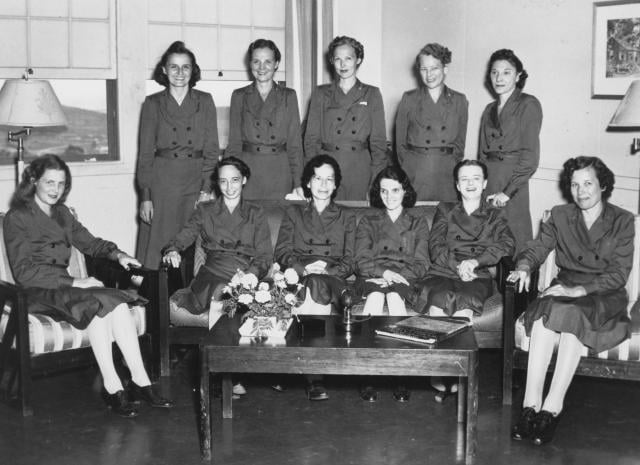In honor of Women’s History Month, here is a story of valor, honor, and perseverance: the story of the Angels of Bataan, a group of U.S. Army and Navy nurses held captive by the Japanese in the Philippines for three grueling years during World War II.
The story begins on 8 December 1941, sometime in the predawn hours. Business was usual in the U.S. military hospitals located across the Philippines. But the nurses and other medical staff at Canacao Naval Hospital, Sternberg Hospital, Fort Mills Hospital, Camp John Hay Hospital, Fort McKinley Hospital, and elsewhere were about to receive the news that would change their lives forever.
War finally had arrived at the United States' doorstep. The Japanese had bombed Pearl Harbor and more than 2,000 Americans were dead. But what did this mean for these vital U.S. positions some 5,000 miles away from Honolulu? Would the Japanese come to the Philippines, too? The Army, Navy, and civilian personnel living and working there did not have to wait long to find out. Only a few hours later the halls of their facilities were crowded with the casualties from the Japanese-led attacks on the Philippines. And a few days later, many facilities were reduced to nothing more than piles of smoking rubble.
To avoid mass civilian casualties, General Douglas MacArthur, then stationed in Manila, declared Manila an open city and ordered military personnel to evacuate the area and relocated to the Bataan Peninsula and Corregidor Island immediately. The Japanese raids on the Philippines, particularly at Baguio and Manila, pressed on. The once-quiet hospitals continued to see an influx of men, women, and children suffering from gruesome injuries.
By New Year’s Eve, all U.S. Army nurses working at Manila had been successfully evacuated from the city, retreating back to field hospitals at Bataan and Corregidor. But 11 women, nurses with the U.S. Navy, were left behind to care for gravely injured patients in the Saint Scholastica Girls School, where Navy wards were established. It was there, on 3 January 1942, the Japanese received the surrender of 27 doctors, 11 Navy nurses, 1 Filipina nurse, a handful corpsmen, and other U.S. personnel. For two months, the medical staff stayed in the ward, continuing to tend to their patients under the sharp and watchful eyes of the Philippines’ new occupiers.
In early March, the doctors and patients were moved to Bilibid Prison in Manila. The 11 Navy nurses, led by Lieutenant Laura Mae Cobb, were moved across the city to the Santo Tomas University, which had become the Santo Tomas Internment Camp. For the next three years, they were prisoners of war.
On arriving, the women were housed in relative isolation, separate from the other prisoners, dubbed “enemy nationals,” living there. During this period, many fell ill with disease, from dysentery to dengue fever to hepatitis. Some months later, they were moved to a different portion of the camp, as the Japanese decided to move their hospital to a larger building, which required more staff than the Japanese could spare. The nurses organized themselves into shifts, and made due with the meager supplies left to them by the Japanese.
By May 1943, the Japanese personnel in charge decided its population had grown too large, posing risk of riots or uprisings from the prisoners. The decision was made to set up another internment camp outside of the town of Los Banos, which was around 40 miles outside of Manila. The internment camp was located at the campus of another school, the University of the Philippines College of Agriculture and Forestry. Once they arrived, the nurses quickly learned medical supplies and facilities were limited. The medical staff turned to their surroundings to source what they needed to treat patients. Tree sap was used as an adhesive for bandages, drinking straws were fashioned from reeds, and mosquito nets were handmade from fibers found in banana leaves.
As 1943 rolled on, food became sparse across the Philippines, and by 1944 strict rations were in effect. The daily caloric intake of the prisoners was reduced to under 800 calories; some of the women lost as much as 50 pounds before being liberated. Weakened by malnutrition, many nurses began experiencing other health problems. Whooping cough, measles, and dysentery all were common among the prisoners, and many women began to experience nerve pain and severe anemia. While all of the nurses managed to survive this starvation, other internees began to succumb. By January 1945, it was estimated that three to four people were dying of starvation every day at Santo Tomas. Yet the Army, Navy, and Filipina nurses pressed on, performing their duties to the best of their abilities.
When U.S. troops finally arrived on 9 January 1945, they were 100 miles away from the camps. It took until 3 February 1945 before the 44th Tank Battalion came crashing through the gates at Santo Tomas Internment Camp, and 20 more days before the 11 Navy nurses at Los Banos were finally free.
In the early morning hours of 23 February 1945, just as the nurses were ending their night shifts, the gunfire and explosions of Allied artillery began to ring out in the darkness. A firefight ensued, and Army amtracs began to evacuate women with children and the elderly, sick, and wounded. Despite being weak and emaciated, the Navy nurses continued to tend to the wounded during the fight, and did not stop until the last of their people were free.
Finally, after three long years of imprisonment, the Angels of Bataan and Corregidor, the Battling Belles of Bataan, the brave women of the U.S Army and Navy Nurses Corps, were going home.




